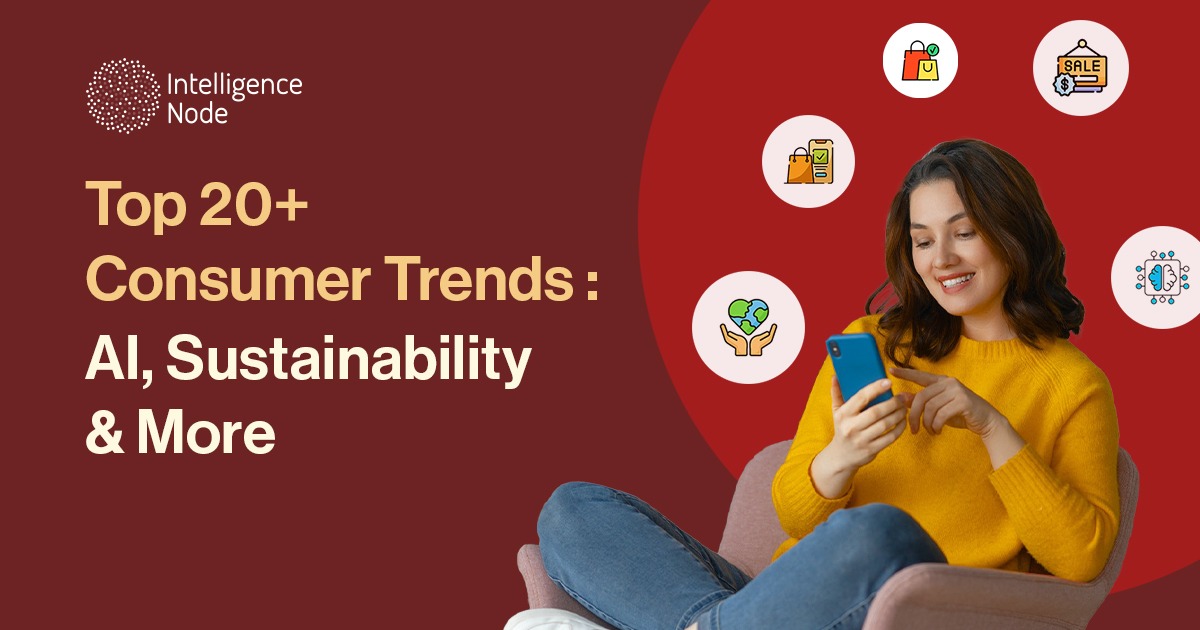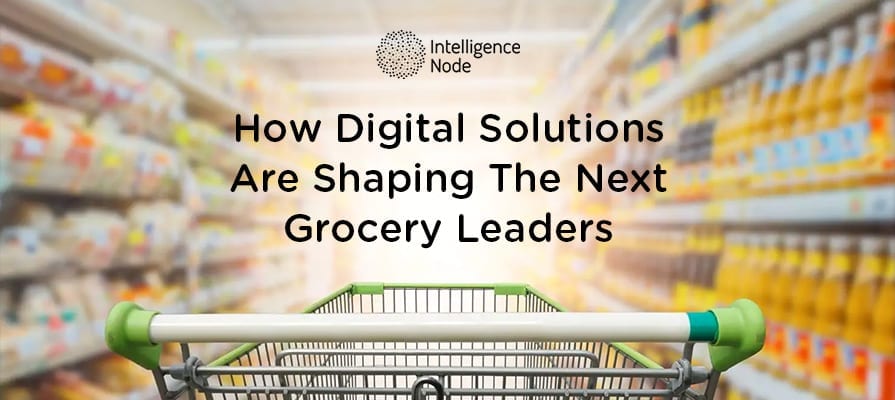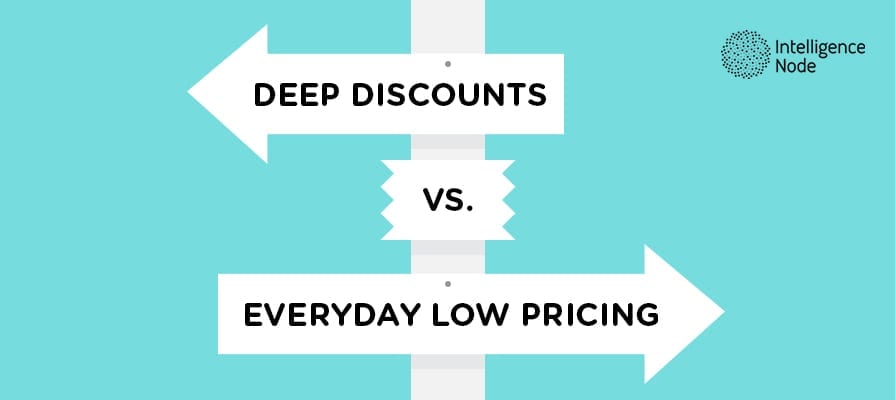There’s no question about it: Consumer buying behaviors and preferences are constantly changing.
What consumers like, want, and choose to buy keeps evolving. These shifts happen for many reasons, including social changes, economic uncertainties, and demographic trends.
On a small scale, these changes might just reflect individual tastes. But when you dive deeper into it, they form larger patterns. These patterns, known as consumer behavior trends, have the power to shape industries and define which brands succeed.
While a lot of these trends quickly disappear, others stick around and influence markets for years. In this article, we’ll explore the 20 consumer trends expected to create a storm in the market, impacting lifestyle habits, purchase drivers, and overall expectations. We’ll break down what they mean for your business and how you can keep up with what your audience wants.
But before that, let’s briefly recap what we saw in 2024—from the rise of sustainable choices to the growing demand for personalized experiences.
A Quick Recap of Consumer Trends in 2024
Last year, consumers squared off with rising prices by cutting hard, as two in five focused heavily on finding better deals. Similarly, over 66% of them looked for discounts, coupons and sale items/lower-priced goods such as private label products to better manage budgets.
Sustainability became another key priority, with around 30% in the 35–44 age group indicating that they would pay a premium for eco-friendly brands. Moreover, secondhand shopping was on the rise with over 44% of consumers shopping pre-owned products more frequently than before. 17.5% turned to private label products as the main food choice, particularly younger buyers seeking value without compromising quality.
Talking about the younger generation—they showed more willingness to share personal data for more customized shopping experiences. Tech integration of AI (machine learning, chatbots and image analytics) into retail is forecasted to add $24.1 billion by 2028, demonstrating that technology is molding the way we shop.
For a deeper look into these behaviors, Intelligence Node’s Consumer Behavior Report 2024 offers insights into what drives consumer choices and how businesses can adapt.
Now that we’ve covered where things stand, let’s dive into the trends shaping the future of consumer behavior in 2025 & beyond.
Consumer Trends You Should Watch Out for in 2025
Social Shopping and Influencer Impact
- Social media is everywhere, and it’s changing how people shop. Over 80% of consumers look up brands on platforms like Instagram and TikTok before buying. Almost 70% have made purchases directly through social channels, and nearly 30% buy on the same day they discover something new. Brands need to know where their audience hangs out and what content grabs their attention. Short videos? Reels? Once you get that, it’s much easier to connect with potential buyers.
- Influencers aren’t going anywhere. Nearly 49% of all consumers buy products after seeing influencer posts. For younger generations, especially Gen Z, influencers play a massive role in shaping decisions. The trick for brands is to pick influencers who feel like a natural fit. Forced partnerships are obvious and can turn off buyers.
- Gen Alpha may still be growing up, but they already have a big say in household spending. These tech-savvy kids respond to messaging that’s transparent, meaningful, and real. For brands, capturing their attention now means laying the groundwork for loyalty in the future.
Omnichannel Shopping and AI Integration
- Most buyers use multiple channels—like social media, websites, and stores—before making a purchase. About 30% use at least three channels for every purchase. Hence, it’s not enough for a brand to excel on just one platform. Social pages, apps, and physical stores all need to work well together.
- Artificial intelligence is transforming shopping in exciting ways. Interactive displays, personalized recommendations, and tailored deals are just a few examples. Consumers are curious, too, with 92% eager to try or already using AI-driven features.
- People remember how they feel, not just what they buy. Virtual try-ons for clothes or AR tools for testing furniture layouts at home are big hits. Good products still matter, but engaging experiences leave a lasting impression. That’s what keeps customers coming back.
Ethical Consumerism and Representation
- Consumers appreciate transparency more than ever. Authentic photos and videos matter, and 98% don’t want to feel tricked by AI-enhanced images. If AI is part of your process, be upfront. Being honest about your methods helps customers feel confident in what they’re buying.
- Consumers care about representation. They want to see diverse ages, sizes, abilities, and identities reflected in brands. Over 82% believe companies should do more to represent the LGBTQ+ community.
- Nearly half (47%) of millennials prefer brands that prioritize sustainability or take a clear stance on social issues. They’re putting their money where their values are.
Financial Flexibility and Checkout Trends
- Offering multiple payment methods, like credit cards, debit cards, and PayPal, is now a baseline expectation. Deferred payment options, especially “Buy Now, Pay Later” (BNPL) services, are reshaping the checkout experience. The BNPL market is thriving, with companies like Afterpay (Clearpay in the UK), Klarna, and Sezzle leading the charge. In fact, Sezzle is now Canada’s top BNPL provider, showing just how popular this model has become.
- Almost 20% of consumers are now demanding account-to-account (A2A) payments through transaction APIs, with open banking paving the way for a smoother checkout experience.
- 82% of shoppers are more likely to buy from a retailer that offers same-day delivery. To keep up with giants like Amazon, small businesses are teaming up with logistics partners. These partnerships allow them to offer fast, reliable delivery without building massive infrastructure.
Subscription Economy and Customer Loyalty
- The global subscription market is now valued at an impressive $3 trillion. In the U.S. alone, 86% of consumers actively subscribe to at least one service, signaling a widespread shift toward recurring purchasing models.
- The global pet furniture market is valued at $1.74 billion, reflecting a significant change in how pet owners view their furry friends. In addition to basic needs, many pet parents are now choosing to invest in premium furniture and accessories aimed at enhancing their pets’ comfort and overall quality of life.
Health and Wellness Priorities
- Nutritional content is now a key factor for a third of U.S. consumers when making purchase decisions. This trend is especially prominent in the western regions, where prioritizing fruits and vegetables and cutting back on sugar intake are among the most common steps toward healthier eating.
- The global mindfulness market continues to grow, from $8.05 billion in 2024 to $18.21 billion in 2028.
Returns and Convenience Demands
- For today’s online shoppers, convenience doesn’t end at checkout—it extends to how returns are handled. Research shows that 55.76% of consumers expect free returns, with over half of them paying close attention to how quickly sellers process those returns. Additionally, 23.92% of consumers prioritize transparency in return costs.
Economic Uncertainty and Spending Shifts
- With slower economic growth, consumers are rethinking their spending. Quality and value for money are top priorities now. The potential for a recession means brands need to stay flexible and responsive. Keeping an eye on economic changes will help businesses make smarter decisions on pricing and offerings.
- On one hand, consumers are willing to pay a 9.7% “sustainability premium” for products that align with eco-friendly principles. Conversely, 30% of consumers have stopped supporting brands due to ethical or sustainability concerns. For businesses, this is a wake-up call. Brands that clearly communicate their ethical practices and sustainable efforts can not only win over customers but also secure their loyalty for the long time.
Security and Privacy Concerns
- Security and privacy concerns are at an all-time high, and consumers are more cautious than ever. Nearly 23% of U.S. internet users refuse to share personal information online, regardless of the perks or benefits offered. With technology advancing rapidly, people are paying closer attention to how businesses handle their data. For businesses, it’s an opportunity to invest in robust cybersecurity measures and being upfront about data usage.
Using Technology to Understand Consumer Preferences and Lead the Competition
The retail landscape in 2025 is buzzing with change, and staying ahead means keeping up and leading the change. To do that, understanding global consumer insights and decoding the shifts in consumer behavior in 2025 is non-negotiable. Brands and retailers need more than just intuition; they need tools and strategies that work smarter, not harder.
From pricing smarter to optimizing what’s visible on the Digital Shelf, modern solutions can completely change how you operate. That’s where Intelligence Node steps in—a trusted partner with cutting-edge tools designed to help retailers make confident, data-driven decisions. Take control of your strategy, be ahead of the competition, and discover what’s next for your business. Schedule a demo with Intelligence Node and see the difference for yourself.




